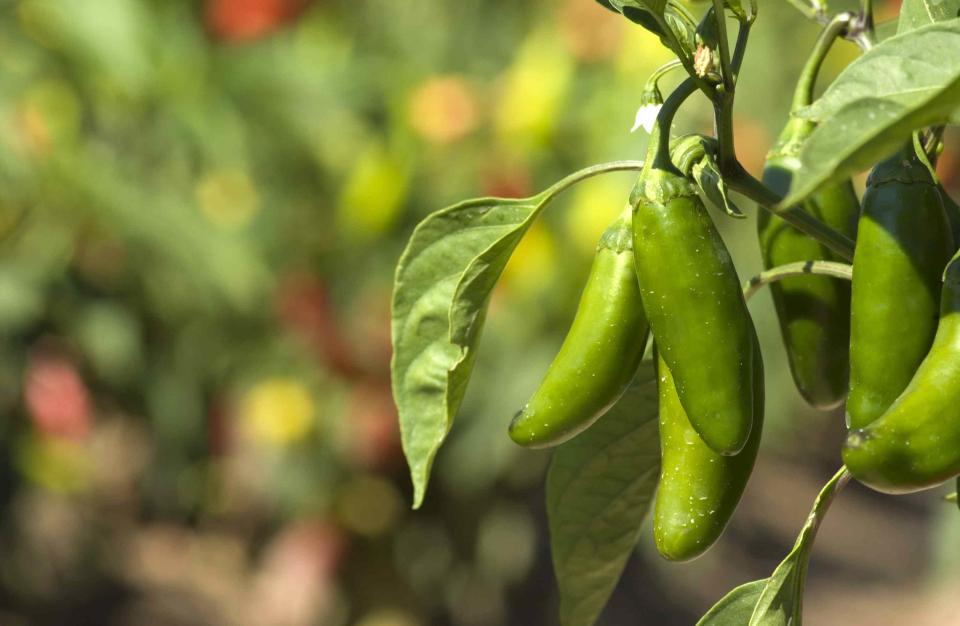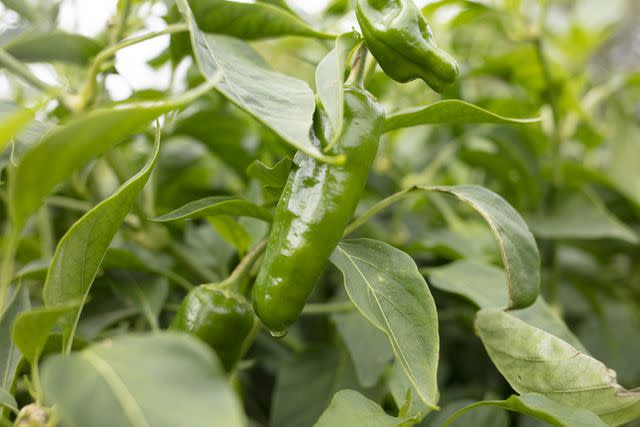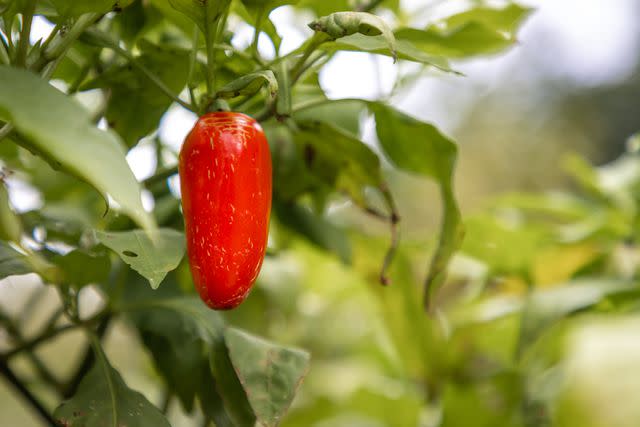3 Tricks to Pick Jalapeños at Just the Right Time
Harvest like a pro with these tips

ElFlacodelNorte / Getty Images
It’s for a good reason that jalapeño peppers are one of the most popular chili peppers grown in home gardens—they are only moderately spicy. With 2,000-8,000 heat units on the Scoville scale (SHUs), their spiciness can vary quite a bit depending on the type of jalapeño, the growing conditions, and, last but not least, the time when you pick the peppers.
Unlike most other chili peppers, jalapeños are harvested when they are still green. Here's the full breakdown of when to harvest jalapeños.
When Is the Right Time to Harvest Jalapeños?

xiao zhou / Getty Images
Look for these two signs to determine whether a jalapeño pepper is ready to pick:
Mature size: The fruits of most jalapeño varieties are 3 to 4 inches long when mature. When they reach this size (and are still green) they are ready to pick. If at the end of the growing season, before the first fall frost hits, you still have fruit left on the plant that is slightly smaller than the mature size, harvest those as well—they are still perfectly edible although they might have less of the characteristic spicy taste of the mature pepper, and they might also be crunchier.
Color: The best time to pick them is when the chili peppers are a deep green. Jalapeños are rather slow to change color, you have a time window of at least a week or two but if you leave them on the plant, they will eventually turn red.
Tip
The size of the mature fruit is usually listed on the seed packet or on the label on the nursery pot, so make sure to keep that information handy until it’s time to harvest your jalapeños.
Green vs. Red Jalapeños

Ajax9 / Getty Images
Red jalapeños are jalapeños that are left on the plant beyond the ideal time to harvest when they are still green. They tend to be spicier with higher units on the Scoville scale than green jalapeños, closer to the maximum 8,000 for jalapeños. Red jalapeños also have a slightly sweeter and fruitier taste.
How to Harvest Jalapeños
Use scissors or hand pruners to cut the jalapeños off the plant. Pepper stems are easily damaged; the best way is to hold the stem with one hand and cut the fruit with the other hand. Do not rip or twist the fruit off the plant with your hands, or you risk removing some unripe fruit from the plant or breaking entire branches off. Always leave at least ½ inch of the stem left on the fruit when cutting it.
Store the freshly picked jalapeños in the crisper drawer of your refrigerator. If you don’t plan to use them within the next few days, wash, dry, and freeze them promptly in freezer bags. You can freeze them whole or cut up in pieces.
The plants won’t survive temperatures below freezing so if the first fall frost is in the forecast, pick all the peppers the day before.
Why Do Jalapeños Turn Black?
Jalapeños turning black can have several causes:
Sunscald: Fruit turning black can be sunscald when there is not sufficient leaf cover to shield them from the burning hot sun. This often happens after the plants have been pruned. Jalapeños with sunscald are usually edible unless they have been so severely damaged by the sun that they turn white and start to rot.
Ripening: Sometimes the blackening is part of the natural ripening process, especially if they show some black streaks but aren’t uniformly black, there is no reason for concern.
Cultivar color: Some jalapeño cultivars are darker than others. There are black jalapeño seeds and purple jalapeños that are so dark that they might appear black.
Disease: Some fungal and bacterial diseases can cause peppers to blacken and rot. If the skin of the chili peppers is black but they are otherwise plump and look healthy, and there are no other signs of disease on the plant such as leaf spots, chances are that the blackening has another, harmless cause.
Frequently Asked Questions
What are those tan or brown streaks on my jalapeño peppers?
The tan or brown streaks that may run from the top to the bottom of the chili peppers, as well as tiny cracks, are caused by the fruit growing very fast. The skin is stretching and rupturing due to the high water content inside the pepper. This phenomenon called corking is purely aesthetic and does not affect the taste of the jalapeños.
Can I ripen green jalapeño peppers after I have picked them?
You can put them on a sunny, warm windowsill where they will turn red but consider if you really want to eat the jalapeños red and spicier. You might be better off storing them green in the refrigerator where they won’t ripen and maintain their typical jalapeño flavor.
Should I wear gloves when harvesting jalapeño peppers?
When you harvest jalapeño peppers, the exposure to capsaicin, the active ingredient in chili peppers that causes burning, is not anywhere near where it is when you cut open the fruit. But if you have sensitive skin, it is a good idea to wear gloves whenever handling the frit and touching the leaves.
Read Next: 23 Types of Peppers You Can Grow in Your Garden
Read the original article on The Spruce.

